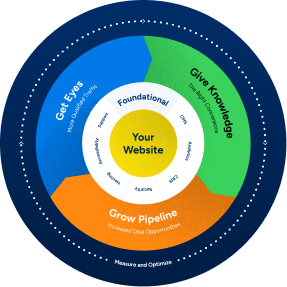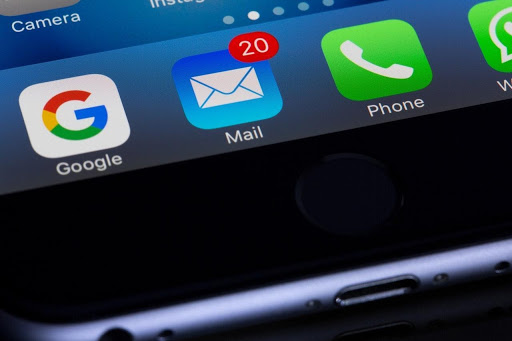It feels strange to say to a client looking to build their brand and improve their conversions that despite everything they are doing with social media marketing and SEO, both on and off the page, we should focus first on what they’re doing to maximize their email marketing strategy.
Email marketing strategy?
Yes, you heard me right. And that’s because all the digital trickery in the world and all of the complex planning that goes into digital funnels and content management and all of the other elements of your inbound marketing strategy, email is still a top-performing component of that process that outperforms most other forms of marketing when you look at the relative costs.
In this article, GoingClear dedicates some digital real estate to talk about email marketing and the statistics supporting the strength of the marketing channel. We’ll then break down some strategies for improving and maximizing the impact of your email marketing campaign and how those steps can improve one of the most important email-centric statistics – your open rate.
The Oldest, Most Effective Marketing Channel
The numbers have shifted over the years, but the latest marketing assessments from Hubspot show that email remains one of the most cost-effective marketing channels your organization can leverage. On average, the medium generates $38 for every $1 spent on advertising or creating the campaigns.
To clarify, that’s a 3,800% return on your investment.
How is that even possible you say? Some of the other statistics around email help to make a little more sense and support why it’s such an effective platform.
Scope of Email Usage
Comparable to social media platforms, there are at least 3.9 billion daily email users operating in the world, with this number expected to increase to 4.3 billion by 2023. Despite this scope, email addresses used to actually conduct business and communicate remain one of the most protected pieces of private data. Marketers know the value of being able to connect to consumers via email, and they maintain extremely well-curated mailing lists. Segmented often by targeted demographic identifiers, these lists are used by B2B marketers to send out newsletters and nurture leads. Much of the success stems from the preferences of certain target demographics.
Mobility and Generational Preferences
The impressive effectiveness of email comes from how people are utilizing mobile devices and how accessible they are, combined with the communications preferences of millennials, one of the most influential demographics participating in the economy currently. Seventy-three percent of millennials prefer that businesses communicate with them via email, whether for advertising purposes or otherwise. That drives marketing professionals to send out 3-5 emails per week, 46% of which are opened on mobile devices.
And it must be catching users’ attention because 59% of respondents to studies say that their purchasing habits are influenced by marketing emails, and engagement has risen over 2020 as more and more individuals are communicating and shopping via online outlets.
How To Build Out An Effective Email Marketing Campaign
So we’ve established that email marketing campaigns are crucial tools that your business should be actively utilizing to generate leads and drive conversions. Let’s dig into some best practices as to how best to structure your campaign in order to drive open rates and maximize your return on investment.
Email Segmentation Increases the Impact of Each Email
However you maintain your customer relationship management (CRM) systems, it’s important that when you pull email addresses that you’re able to do so by key demographic categories so that your messaging can be as targeted as possible. While you might have a general customer base to which you want to sell, you should be selling to different demographic groups with unique marketing messaging. By segmenting out your messaging you can tap into the specific needs and problems of unique consumer groups more effectively. By segmenting out your messaging and making it meaningful in a targeted way, you drive open rates and increase revenue by up to 760 percent.
Mobility Is King
When creating emails, design them to be optimized for mobile screens and structured in such a way as to be eye-catching in the subject line as well as upon opening. Single column designs work great and ensure that you’ve created call-to-action buttons large enough to actually be pressed. A well-designed email that is easily readable on any device not only gets opened, but flagged for followup.
Text Over Images, And Personalize Text Content to Recipient
Don’t simply cut and paste marketing images into an email with a link. Instead, opt for meaningful but short and simple text emails with links out to the target landing pages for the products and services highlighted in the email. The text and link format tends to work best, as many email clients filter out and automatically categorize as spam emails with images as the only content.
“Noreply” Will Result in Exactly That
Regardless of whether you’re automating emails or sending them out manually, you’ll want to make sure you’ve personalized the sender field so that it comes from an actual person. Using systems that label mass-mailings or automated emails as “noreply” in the sender line will almost guarantee that the email won’t be opened. In fact, 65% of subscribers to email lists will open emails based on knowing the sender.
Your Subject Line Can Make or Break Your Email Campaign
The subject line is the strongest driver of open rate. Whether viewing email on a desktop browser or a mobile phone, most email users have their systems configured to show email by the subject first, and only expand the message if it’s clicked on. That means the subject line is your 10 seconds to make an impression. They should be short – most systems truncate on the display anything over 50 characters – and include a sense of urgency or a call to action so as to inspire the reader to react. Of the limited 6-10 words that you’ll get out of 50 characters, you’ll boost your open rate by using their names to personalize the experience.
It’s important to remember that you have to balance urgency against phrasing that spam filters are often set to look for. You can convey that this email is about a limited-time sale in the language of the subject line, but don’t use multiple unnecessary punctuation or clever capitalization, or other tricks with the text. Keep it simple. And perhaps the most important aspect of crafting your campaign’s subject line is that a strong subject line has to be backed up by a great offer on the inside.
Sending at the Right Time of the Day
Everyone has a different routine when it comes to their email. However, think about the workflow of the day. Mornings are generally dedicated to either existing business from the day before or planning out the day ahead. Afternoons after lunch are dedicated often to wrapping things up and following up on business that’s come up throughout the day. This is the best time of the day to schedule an email campaign to send, as they’ll already be in the mindset of following up with individuals they know. Personalizing the sender and the subject line will increase the chances that it will be opened, as they’ll be looking for familiar names and businesses to follow up within that window of time.
GoingClear Can Help You Cue Up Your Next Email Campaign
As a Boston-based digital marketing firm, we know a little bit about the challenges of navigating in a highly competitive industry segment. We want to help businesses build their sales through improved conversions, and one of the most effective tools for doing that is a well-designed email campaign. To learn more about how to build a segmented list, target your campaign, and create copy that will maximize your open rate and conversions, and how that campaign fits into your broader marketing strategy, reach out to our team today.

